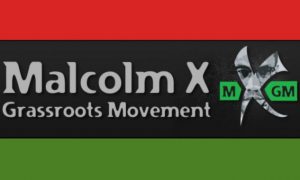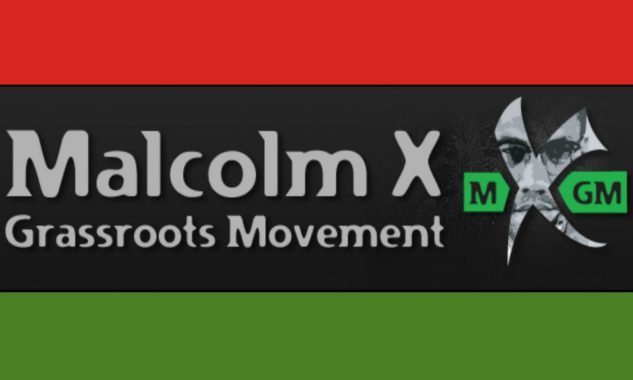Ahadi Tyehimba, Chinganji Akinyela, Rukia Lumumba et al.
 The following contributions come from some of the founding and longtime members of the New Afrikan People’s Organization (NAPO) and the Malcolm X Grassroots Movement (MXGM): Kwame Kalimara, Watani and Ahadi Tyehimba, and Makungu and Chinganji Akinyela. Though not included in these reflections, Safiya Omari, the late Chokwe and Nubia Lumumba and Akinyele and Aminata Umoja were also instrumental to the development of NAPOs and MXGMs cadres. The following reflections illustrate the significance of the Southeast region of the territory commonly known as the United States of America to New Afrikan political organization – a terrain to which New Afrikans (Black people) refer to as the Republic of New Afrika. Each conversation outlines the history of the NAPO and MXGM, the objectives of these political formations, and their relationship to the ever-changing arrangements of global white supremacy. The authors suggest that the New Afrikan Independence Movement, though a challenge to global white supremacy, is guided by a desire for cultural, spatial, and economic self-determination for New Afrikans. Integral to this initiative is the disciplined study of key scholarship within Africana Studies and political practice that meets the various needs of New Afrikans across time and space. NAPO’s and MXGM’s diasporic politics makes possible alignments between the struggle of New Afrikans with those oppressed people of color throughout varying parts of the world. With that said, we intend for this compilation of insights from New Afrikans and about the histories of New Afrikan thought and practice to inspire and propel people’s movement across the globe.
The following contributions come from some of the founding and longtime members of the New Afrikan People’s Organization (NAPO) and the Malcolm X Grassroots Movement (MXGM): Kwame Kalimara, Watani and Ahadi Tyehimba, and Makungu and Chinganji Akinyela. Though not included in these reflections, Safiya Omari, the late Chokwe and Nubia Lumumba and Akinyele and Aminata Umoja were also instrumental to the development of NAPOs and MXGMs cadres. The following reflections illustrate the significance of the Southeast region of the territory commonly known as the United States of America to New Afrikan political organization – a terrain to which New Afrikans (Black people) refer to as the Republic of New Afrika. Each conversation outlines the history of the NAPO and MXGM, the objectives of these political formations, and their relationship to the ever-changing arrangements of global white supremacy. The authors suggest that the New Afrikan Independence Movement, though a challenge to global white supremacy, is guided by a desire for cultural, spatial, and economic self-determination for New Afrikans. Integral to this initiative is the disciplined study of key scholarship within Africana Studies and political practice that meets the various needs of New Afrikans across time and space. NAPO’s and MXGM’s diasporic politics makes possible alignments between the struggle of New Afrikans with those oppressed people of color throughout varying parts of the world. With that said, we intend for this compilation of insights from New Afrikans and about the histories of New Afrikan thought and practice to inspire and propel people’s movement across the globe.
Akil Bakari: What is white supremacy?
Kwame Kalimara: White supremacy is an ideological term which states that people who are classified racially as “white” are superior to those peoples who are non-white. Moreover, it denotes that the resources of the planet must be under the dominion of both public (government) and private (corporations) enterprise within the conceptual framework of ideas and practices of persons classified as “white.” The term “race” is a social construct which has no basis in biology. It was created to justify inhumane conditions in efforts to control and at times destroy human (genocide) beings deemed non-white to control land and the resources of which they were custodians (land ownership was foreign to Afrikan peoples and other peoples of color).
Scientific racism is witnessed in the study of the Atlantic Slave Trade, Jim Crow laws, Nazism, Apartheid in Azania (South Africa). White supremacy has many forms and different faces. But they all look at peoples of color/non-white peoples as their primary enemy. Today, in the academic world “critical race theory” argues that “white supremacy” means that white people enjoy structural and systemic privilege (advantage) over non-white peoples, collectively and individually.
Akil Bakari: Does white supremacy inform the founding of NAPO?
Kwame: The New Afrikan Independence Organization (NAPO) is a nationalist organization and our primary objective is to win the independence of the Republic of New Afrika, an internal colony of the United States of America. As Pan-Afrikanists, we are committed to the total liberation and unification of all Afrikan nations on the Afrikan continent and around the world. We are a pro-socialist formation seeking to establish our nation as an independent socialist republic. We are anti-imperialist and support struggles to destroy imperialism wherever it exists. We are internationalists struggling in solidarity with colonized peoples around the world against their oppressors. We are revolutionaries who believe that well-armed masses must be organized to protect ourselves from police and government terror in order to win the war of liberation. We are a womanist formation and as such we are committed to eradicating sexist oppression of women and the oppression of persons of any gender identity.
White supremacy did not inform NAPO. Self-Determination informed the founding of NAPO. Self-Determination is an inherent right of all people. It is the process by which a people or country determines its own statehood and forms its own allegiances and government. We, as our ancestors, have always envisioned peace and security as a people, developing the best of who We are. The violation of our nations and communities in Afrika and the Afrikan diaspora through the acts of enslavement, colonialization, genocide, exploitation, and oppression informed us that we were in a war against European and other foreign aggressors. The legacy of our condition and desire to correct the conditions and repair ourselves speaks more about what We are fighting for as opposed to what We are fighting against. NAPO is, in essence, “proactive.” In fact, our constitution preamble states We are:
dedicated to the legacy of the struggle for self-determination passed on to us from our freedom-fighting ancestors, and committed to the struggle to liberate the New Afrikan Nation in America for ourselves: our children, and in the interest of Afrikans and other freedom seeking peoples throughout the world, We, as patriotic New Afrikan men, women and children, and as founders of the New Afrikan Peoples Organization.
The term white supremacy gave a clear definition in the 1960s of the experiences of peoples of color. The definition addresses prejudices and discriminations directed against a person of a different race based on the belief that their own race is the superior race. White supremacy recognizes the global reality of ‘white’ nations’ domination and control over nations of color, their resources and quality of life. It is important to examine racism further. Can black people be racist? The prejudice (pre-judgement) by New Afrikans/blacks is informed by history. It is safer to assume whites will harm us. The current killing of black women, children, by police and those taking on the role of race police (vigilantes) is evidence. NAPO and our parent formations understood racism and its implementation of power. We did not view all white peoples as enemies. We recognize the global abolition movements against slavery that have developed throughout history. We advanced the standard forwarded by John Brown, a white man who put his family on the line for the abolition of slavery. Maryln Buck, David Gilbert, Susan Rosenburg, Kathy Boudin and Silvia Baraldini are a few modern examples of John Brown.
The late 1960s is known as the Black Power Movement. Its predecessor was called the Civil Rights Movement because organizations (including the Fellowship of Reconciliation (FOR), the Southern Christian Leadership Conference (SCLC), Congress of Racial Equality (CORE), the National Association for the Advancement of Colored People (NAACP) and the Student Nonviolent Coordinating Committee (SNCC)) sought redress for the conditions of black people through non-violent demonstrations aimed at legislative amendments. The Black Power Movement sought “power,” a term in inclusive of racial pride, economic power, and the establishment of political and cultural institutions. The term “black power” became the clarion call in the 1960s, though it had been used in the 1940s and 1950s. In 1966, Kwame Ture (then Stokely Carmichael) and Willie Ricks (now Mukasa Dada) of the Student Nonviolent Coordinating Committee (SNCC) led marchers in chanting “black power” in Greenwood, Mississippi. It was nationally televised march and “black power’ chant energized communities to build more ‘power’ within black communities.
The New Afrikan Independence Movement (NAIM) studied the Haitian Revolution and the Quilombos of Brasil (and their nation states) as models of Afrikan/black Self-Determination in the New World (Western Hemisphere). In the early colonialization of the Americas, there were independent communities of Afrikans (Florida – Black Seminoles; Oklahoma – Black Seminoles; Louisiana – fugitive colonies; North Carolina and Virginia – the Great Dismal Swamp maroons). These early challenges to French, Spanish, and Portuguese white supremacy are inspirations to our movement.
We also looked to international law as one of our tools to use against our colonialization. The United Nations Charter provided definition for Self-Determination. The Universal Declaration of Human Rights (1948) listed a broad range of rights deemed to be inherent for all human beings. But it was Article 15 that informed our juristic approach. It states, (1) Everyone has the right to a nationality. (2) No one shall be arbitrarily deprived of his nationality nor denied the right to change his nationality. This is a statement legally affirming New Afrikan nationality within the illegal boundaries of the U. S. empire.
NAPO has used other United Nations instruments in our pursuit of Self-Determination and Human Rights. They are the United Nations Declaration on the Granting of Independence to Colonial Countries and Peoples, the International Convention on the Elimination of All Forms of Racial Discrimination, the International Covenant on Civil and Political Rights, the International Covenant on Economic, Social and Cultural Rights, the Optional Protocol to the International Covenant on Civil and Political Rights, the Convention on the Elimination of All Forms of Discrimination against Women, the Convention against Torture and Other Cruel, Inhuman or Degrading Treatment or Punishment, and The Convention on the Prevention and Punishment of the Crime of Genocide. From 1951 through 1984 these instruments were argued in our predecessor formations and became part of our arsenal when we established NAPO. We have incorporated other United Nations Conventions and Covenants. The latest is the Durban Declaration (2001) declaring that ‘slavery is a crime against humanity.’
The laws of the United States empire saw New Afrikan people as less than human in its founding documents, particularly the U. S. Constitution (1788). The United States in its census counted in the apportioning representatives, presidential electors, taxes, and enslaved Afrikans in the southern portion of the country. The northern industrial states had large percentages of European (white) peoples, where the south had fewer European Americans and large numbers of enslaved Afrikans. The objective was to create a fiction of the balance of power between the north and south. Afrikans were considered 3/5th human for the purpose of legislative representation – white supremacy. In 1857 the United States Supreme Court clearly articulated its racist (white supremacist) intention in the case of Dred Scott vs. Stanford which stated that “the black man has no rights in which a white man is bound to respect.” Moreover, it stated that the government never intended to grant rights to the enslaved Afrikan population. This landmark decision hastened the American Civil War (1861-1865). It would be the 13th Amendment (1865) to the U. S. Constitution that would abolish chattel slavery, with the exception as punishment for a crime. It would be the 14th Amendment (1868) to the U.S. Constitution which imposed “second class” citizenship on newly freed Afrikans in violation of their rights of voluntary citizenship, repatriation, expatriation, or an independent New Afrikan nation (see Article 15 of the UDHR as the contemporary articulation of Self-Determination).
The work of psychiatrist, Dr. Francis Cress Welsing, particularly, her publication of The Cress Theory of Color Confrontation, gave New Afrikans (Black people) greater ideological clarity on racism and the term “white supremacy.” Although the Black Liberation Movement did not support all of her theories, her research laid a strong basis for the use of the term. Much of her framework was based on Dr. Cress Welsing’s review of Dr. Neely Fuller, Jr.’s research which determined that “white supremacy” was global racism.
The New Afrikan Independence Movement was very well read. Dr. Franz Fanon’s The Wretched of the Earth, Mao Zedong’s Red Book, We Charge Genocide by William Patterson, Black Reconstruction and The Souls of Black Folks by W.E.B. DuBois, Ralph Ellison’s Invisible Man, Regis Debray’s Revolution in the Revolution?, Ho Chi Minh’s Selected Writings, Before the Mayflower by Lerone Bennett, Jr., The Choice by Samuel Yette, Revolution in Guinea by Amilcar Cabral, Destruction of a Black Civilization by Chancellor Williams, and The Communist Manifesto by Karl Marx are a few examples of the diverse readings of revolutionary forces in the early 1960s. NAPO has a legacy which predates our founding. We have built on that legacy and We will continue to listen, learn, teach and organize our people on the path of Self-Determination/Liberation/Nationhood. Revolutionary theory and practice is an ‘evolving’ process. We understand that material conditions change, and We will address those conditions with the appropriate theories, practices, strategies, and tactics to meet our liberatory needs. We will “Free the Land!!!
Interaction between Rukia Lumumba and Watani and Ahadi Tyehimba
Rukia Lumumba: Did white supremacy inform the founding of MXGM?
Watani and Ahadi Tyehimba: White supremacy did not inform the founding of MXGM. In 1990, the Malcolm X Grassroots Movements (MXGM) was created as the mass association of its parent organization, the New Afrikan People’s Organization (NAPO), which was formed in 1984 to struggle for self-determination and national liberation of the New Afrikan Nation. However, white supremacy being a racist ideology utilized by the United States’ white settler nation to keep other people and nations of color colonized must be challenged by organizations like MXGM.
NAPO was comprised of young radicals from the House of Umoja (HOU), Afrikan People’s Party (APP), Provisional Government-Republic of New Afrika (PG-RNA), New York Black Panther Party (BPP), the National Task Force for COINTELPRO Litigation and Research (NTFCLR), Take the Land cadre (TTL) and the New Afrikan Women’s Organization (NAWO). We were all Revolutionary Black Nationalists, Pan-Africanists, Internationalists, Pro-Socialists and Anti-Imperialists demanding the right of self-determination and the liberation of the New Afrikan nation. Ahadi and I are founding members of NAPO and MXGM coming from the HOU and APP.
~~~
Please read the full article here: Prabuddha: Journal of Social Equality
To Cite: Kalimara, K., Tyehimba, W., Tyehimba, A., Akinyela, M., Akinyela, C., Lumumba, R., Wright, W., & Bakari, A. (2018). Witnesses to Struggle: Reflections on Oppression and Resistance in the USA. Prabuddha: Journal Of Social Equality, 2(1), 17-25. Retrieved from http://prabuddha.us/index.php/pjse/article/view/25

